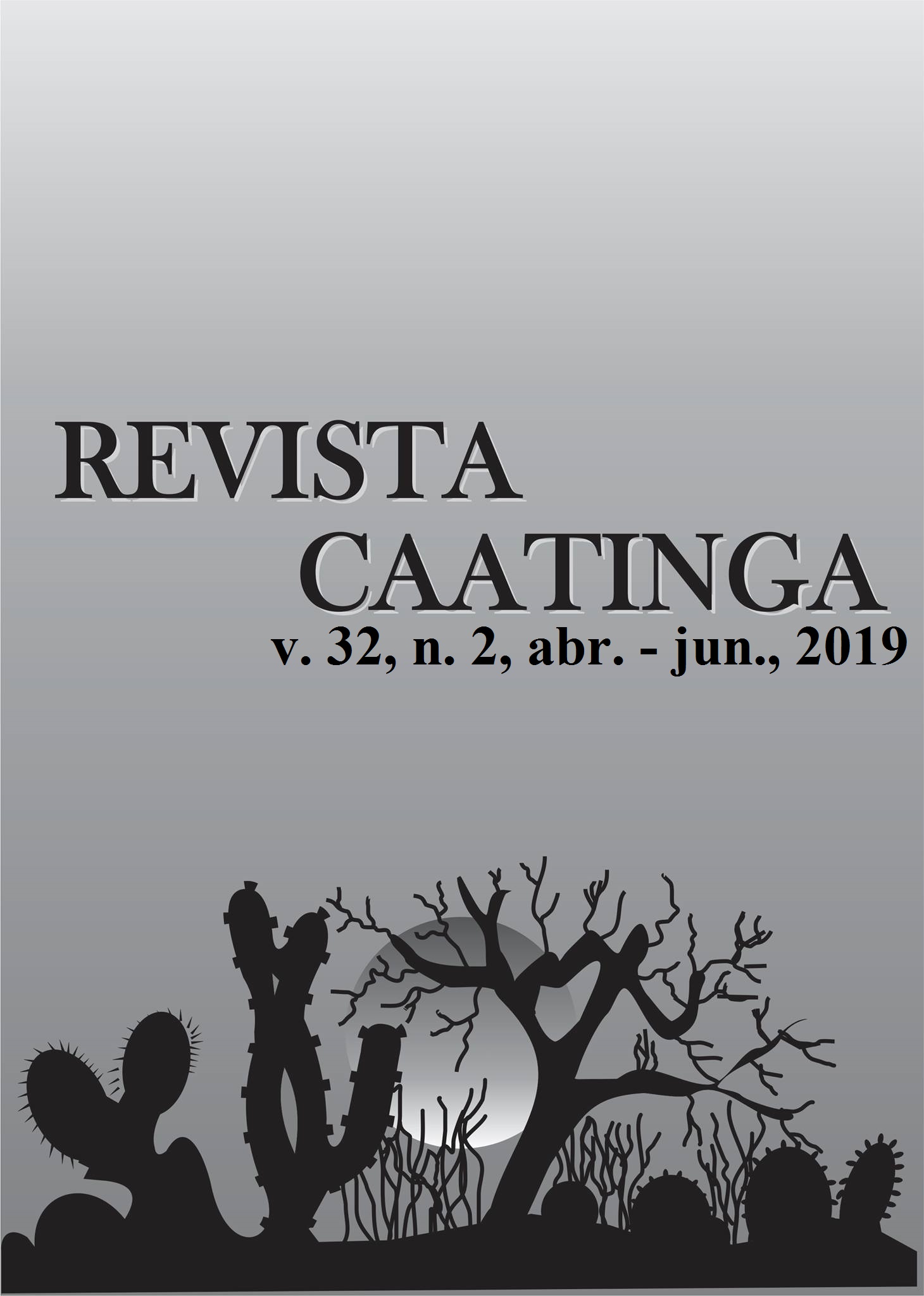DANO CELULAR, STATUS HÍDRICO E TROCAS GASOSAS NA MAMONEIRA SOB NATUREZA CATIÔNICA DA ÁGUA
DOI:
https://doi.org/10.1590/1983-21252019v32n221rcPalavras-chave:
Ricinnus communis L. BRS Energia. Salinidade. Irrigação.Resumo
A mamoneira é uma oleaginosa que possui capacidade de adaptação a variadas condições edafoclimáticas, além de ser uma cultura que se apresenta com considerável teor de óleo em suas sementes com potencial para uso na indústria ricinoquímica. Neste contexto, o estudo teve como objetivo avaliar as mudanças do dano de membranas, o status hídrico e as trocas gasosas em plantas de mamoneira (cv. BRS Energia) em respostas a salinidade e natureza catiônica da água de irrigação. Utilizou-se de blocos casualizados, testando-se seis composições catiônicas da água (S1 - Testemunha; S2 - Na+; S3 - Ca2+; S4 - Na+ + Ca2+; S5 - K+ e S6 - Na+ + Ca2+ + Mg2+) e quatro repetições. As plantas referentes ao tratamento testemunha foram submetidas à irrigação com água de baixa condutividade elétrica (S1 - CEa = 0,6 dS m-1) e os demais tratamentos foram irrigadas com CEa de 4,5 dS m-1 preparada com diferentes íons. A maior suculência no limbo foliar associado ao menor déficit de saturação hídrica é um indicativo de tolerância ao estresse salino da mamoneira irrigada com água de composição potássica. A presença de sódio na água de irrigação proporcionou o maior déficit de saturação hídrica no limbo foliar da mamoneira. O menor dano na membrana celular foi obtido nas plantas irrigadas com água de composição cálcica. O efeito deletério do estresse salino sobre as trocas gasosas da mamoneira depende da natureza catiônica da água e obedeceu à seguinte ordem Na+>Na++Ca2+>Ca2+>Na++Ca2++Mg2+>K+.
Downloads
Downloads
Publicado
Edição
Seção
Licença
Os Autores que publicam na Revista Caatinga concordam com os seguintes termos:
a) Os Autores mantêm os direitos autorais e concedem à revista o direito de primeira publicação, com o trabalho simultaneamente licenciado sob a Licença Creative Commons do tipo atribuição CC-BY, para todo o conteúdo do periódico, exceto onde estiver identificado, que permite o compartilhamento do trabalho com reconhecimento da autoria e publicação inicial nesta revista, sem fins comerciais.
b) Os Autores têm autorização para distribuição não-exclusiva da versão do trabalho publicada nesta revista (ex.: publicar em repositório institucional ou como capítulo de livro), com reconhecimento de autoria e publicação inicial nesta revista.
c) Os Autores têm permissão e são estimulados a publicar e distribuir seu trabalho online (ex.: em repositórios institucionais ou na sua página pessoal) a qualquer ponto antes ou durante o processo editorial, já que isso pode gerar alterações produtivas, bem como aumentar o impacto e a citação do trabalho publicado (Veja O Efeito do Acesso Livre).







